How to create a graphic and contemporary feature wall
Posted on July 15, 2020 in Design
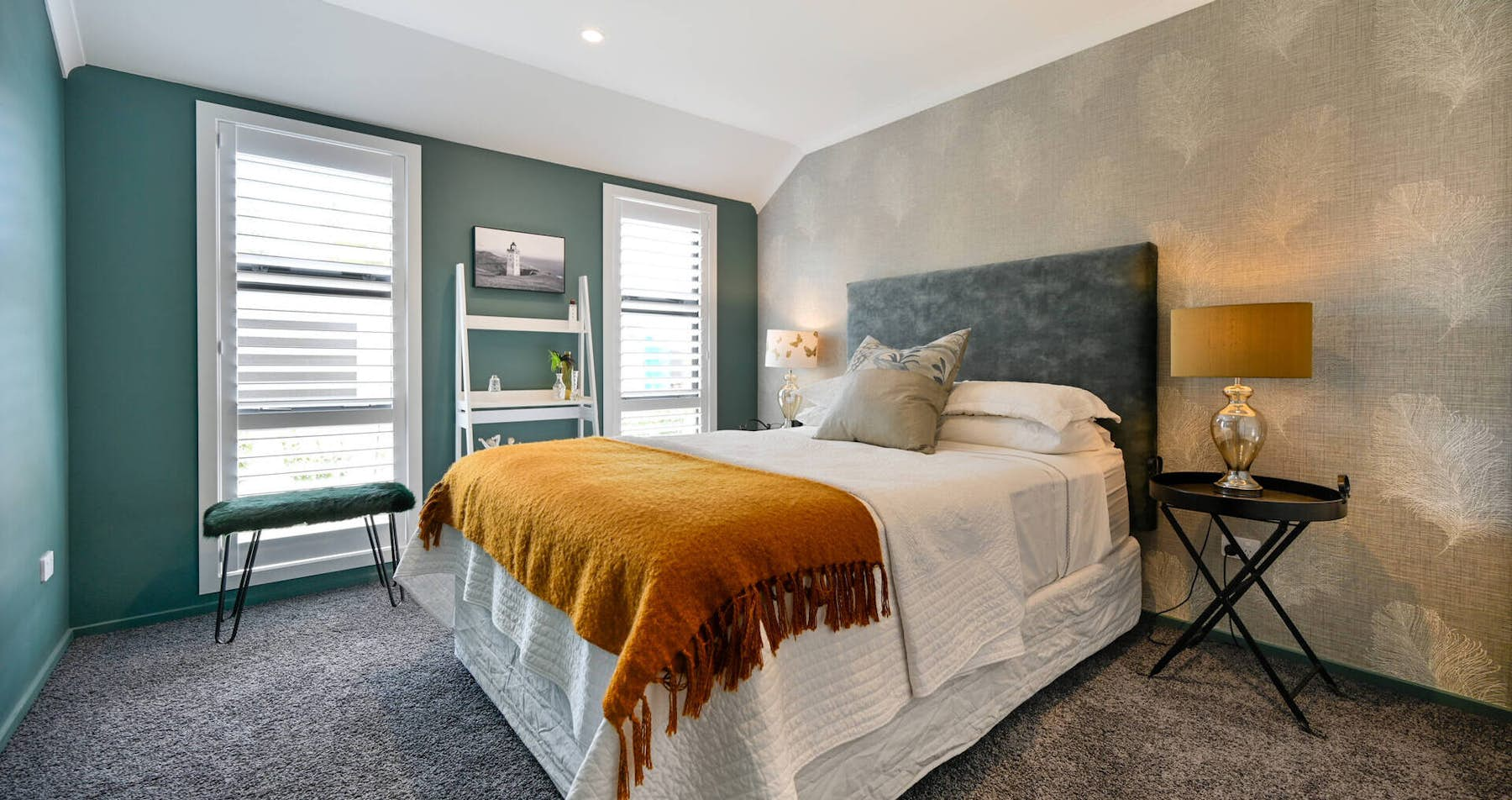
How we treat a feature wall may change from year to year as we track the fashions, but they will always be an extremely handy way to add personality, character and definition to a space or room.
At its easiest form, a feature wall can be painted all over in one colour. This is a good treatment if there are a variety of elements or different colours in the room already – you’re not introducing a patterned element. Feature walls can help define a space within an open-plan areas, say behind the dining table, or on the bedhead wall of a bedroom. You can either choose a tonally darker colour than the rest of the walls, or go for something with contrast.
A warm coloured feature wall will appear to advance towards you so is good for visually shortening a long room. A dark, cool feature wall will make the wall seem to recede so will make a smaller space feel larger.
Another very easy way to achieve an instant feature wall is by using wallpaper. There are so many patterns, colour and styles in the Resene Wallpaper Collection, you’ll be spoilt for choice. Current looks include whimsical painterly scenes that make the entire wall look like an artwork, as well as bold botanical designs.
The new trend to feature walls is feature rooms, so instead of just treating one wall to an accent colour, embrace the whole room.
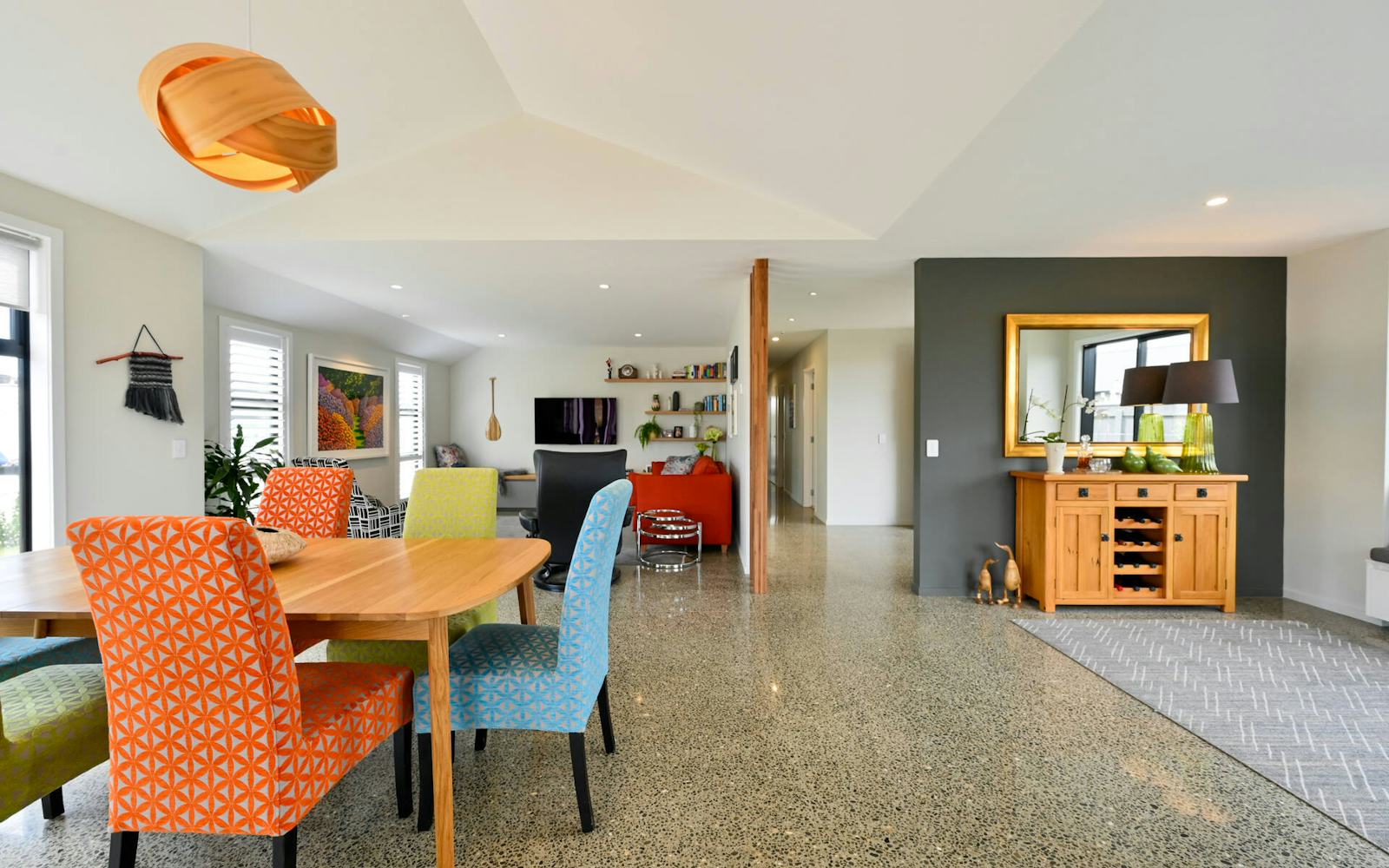
Shaping up
Letting loose your inner artist is easy with some Resene paint and a roll of masking tape. Geometric shapes, with strong angles and straight lines are easiest, just arm yourself with masking tape. Asymmetrical shapes are often more pleasing to the eye, especially on a large scale, and often give you the illusion of more space.
Adding shapes to your walls – or the floor and even the ceiling – is a relatively simple way to stamp your personality on your home, add a splash of colour to an otherwise neutral palette, make plain rooms more dramatic and often create the illusion of more space.
Some good general tips are to keep busy geometric designs to only one wall of a room, and to use the same or complementary shades throughout the space. That way the wall will be integrated into the whole room, rather than being jarring or overwhelming. Think about incorporating your shape design into the room the same way you would a piece of art.
Of course, a fun exception is in a kids’ playroom where a collection of bright, bold and even clashing colours might be just the thing for creating a fun, creative space.
Resene testpots are often the perfect amount of paint to paint a shape on a wall so you can transform a wall quickly and easily. Once you have gained in confidence, you could try softer more relaxed curves and circles, or freeform shapes. Sketch your design on the wall first, or scaled down on a piece of paper.
Or you can create a stencil first that you can tape to the wall and paint around. Or find a central point and use a string and chalk to draw an arc. Spend a little bit of time practising with a good cutting-in brush for the perfect finish!
Shapes to try:
• Polka dots can be a fun way to decorate a child’s bedroom. Rather than cover a whole wall, try creating patterns out of small groups of different size dots. To get perfect circles cut a stencil from thin card or use a round sponge applicator.
• For a more retro circle design, try interlinked outlined circles of different sizes.
• Go for a 3D effect in a bedroom or sitting room with triangles of all shapes and angles butting up together in different shades of white to dark grey.
• Contrasting lines in a bold geometric pattern is a very modern, stylish way to add interest to a wall. Go asymmetrical rather than repeating the same shape to add drama and interest for the eye.
• Diagonals or stripes in graduated shades of the same colour, or using complementary colours, can add extra dimension to a small or square room. When using different colours across one wall remember lighter shades at the top will open the space up, while using darker shades at the top can decrease the ‘looming’ sensation of a large wall expanse with a high ceiling.
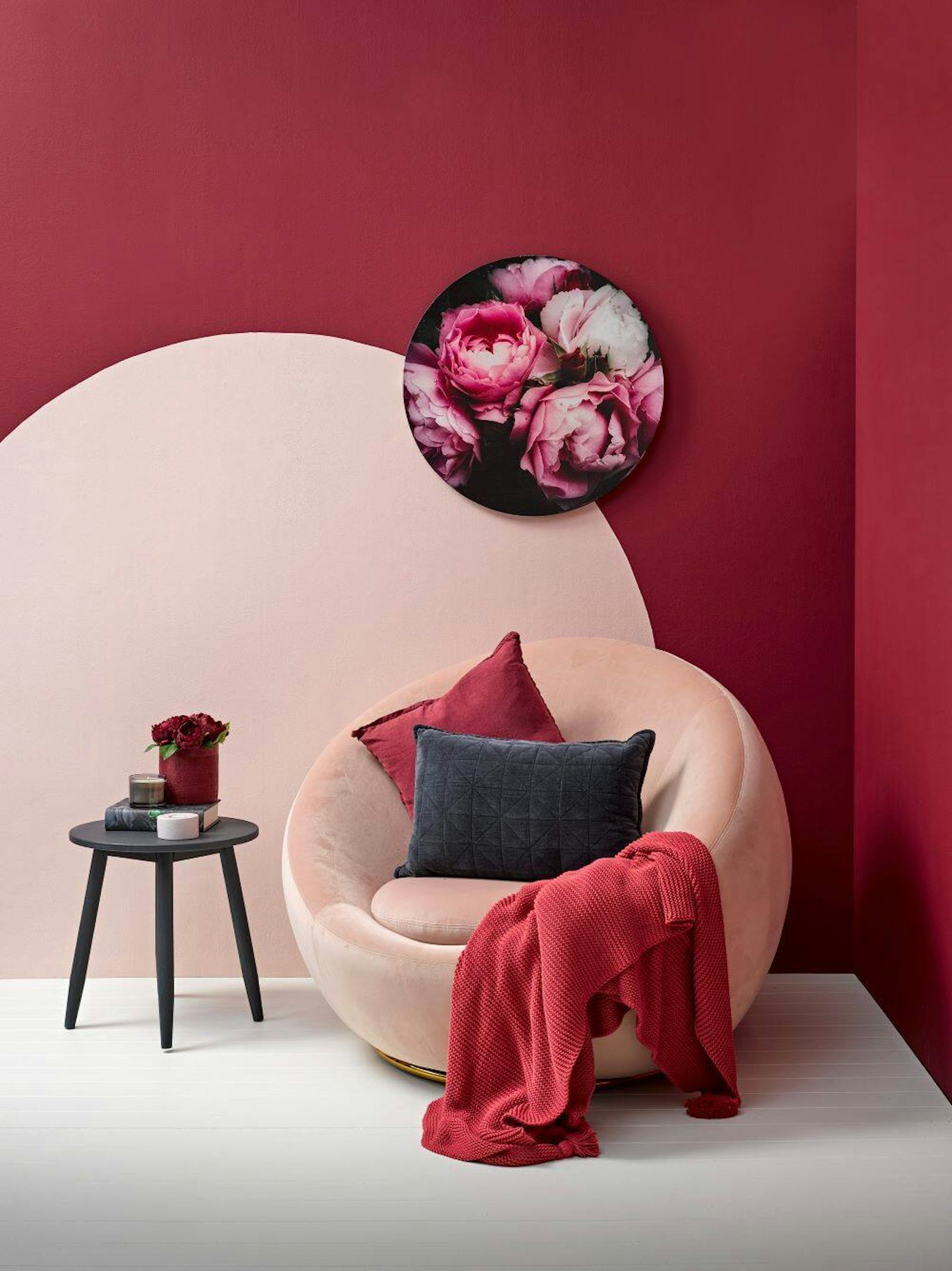
Step outside the square and paint a circle on the wall – this is Resene Dust Storm on a Resene Pohutukawa wall. The floor is in Resene Double Rice Cake, the coffee table is Resene Foundry, the vase is Resene Pohutukawa and the tealight holder is Resene Dust Storm.
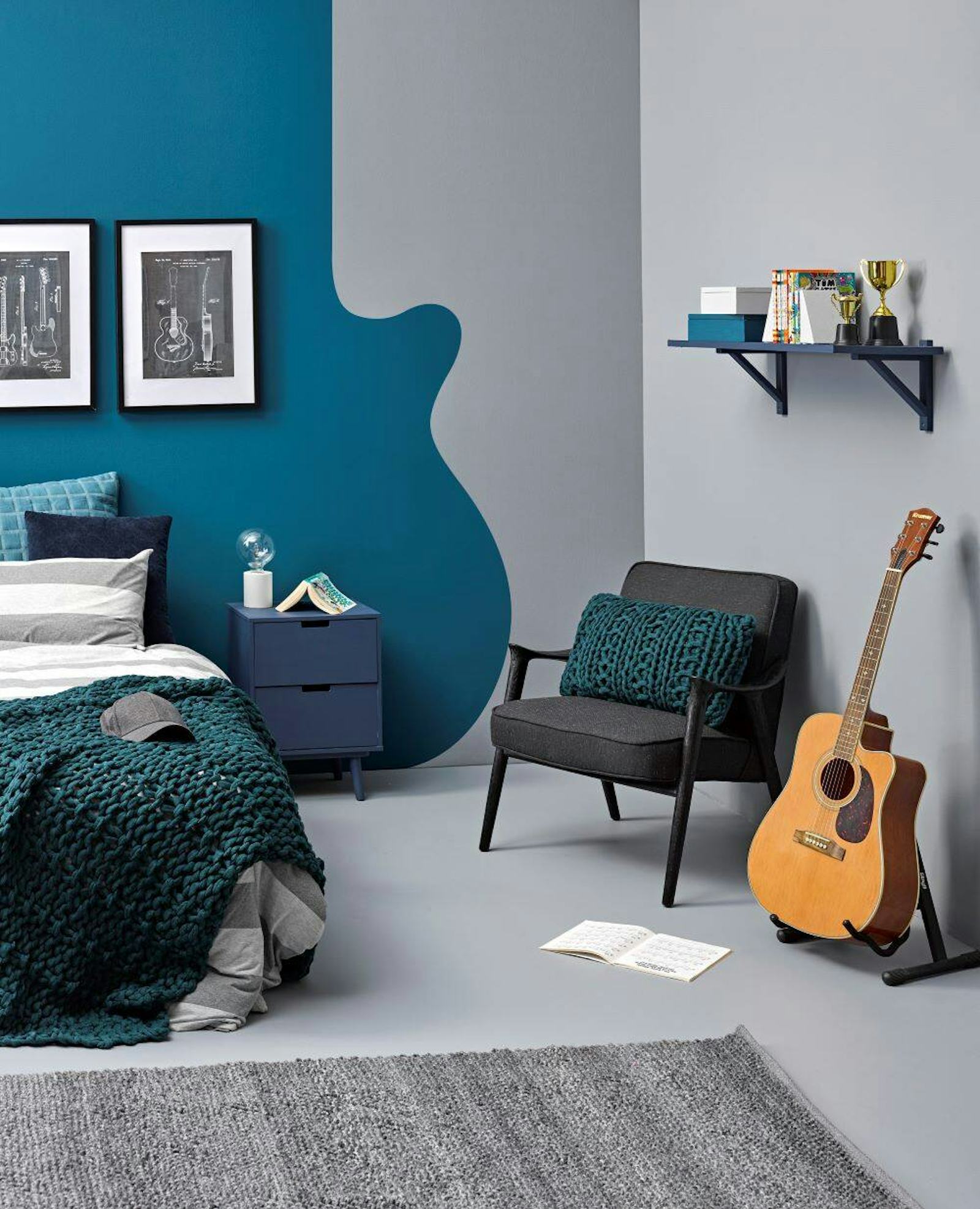
A simple painted shape can add fun and a subtle theme to a child’s room without having to go overboard. This guitar silhouette echoes a boy’s passion for the instrument and extends out from a part wall painted in zingy teal Resene St Kilda. The other walls and floors are painted in Resene Half Raven as a cooler counterpoint, and to give the room a strong graphic look. A bedside table and shelf painted in inky blue Resene Licorice stop the room from being too contrived, colourwise, while a bedside lamp base and box are painted in Resene Surrender. This colour scheme is also very age-neutral so will stay relevant and a child grows.
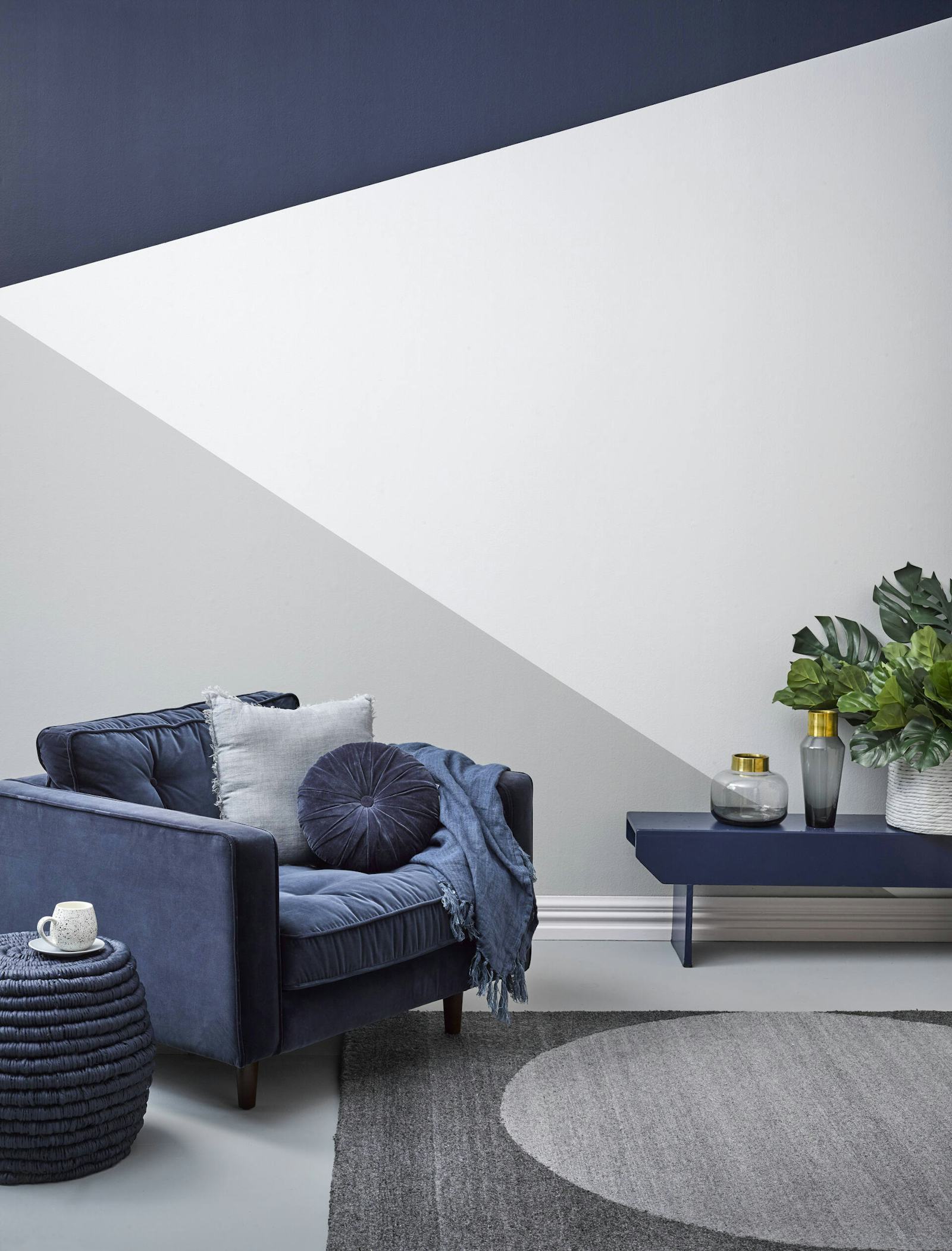
Simple and bold geometric shapes transform this wall with the top triangle painted in Resene Indian Ink, the middle triangle in Resene Athens Grey and the bottom triangle in Resene Atmosphere. The room is pulled together with Resene Stack on the floor, Resene Indian Ink on the rope side table, Resene Blue Night on the bench, and Resene Eighth Tapa on the picture frame and the small pot.
Still not sure abut a feature wall? Check out our post on choosing the right white.